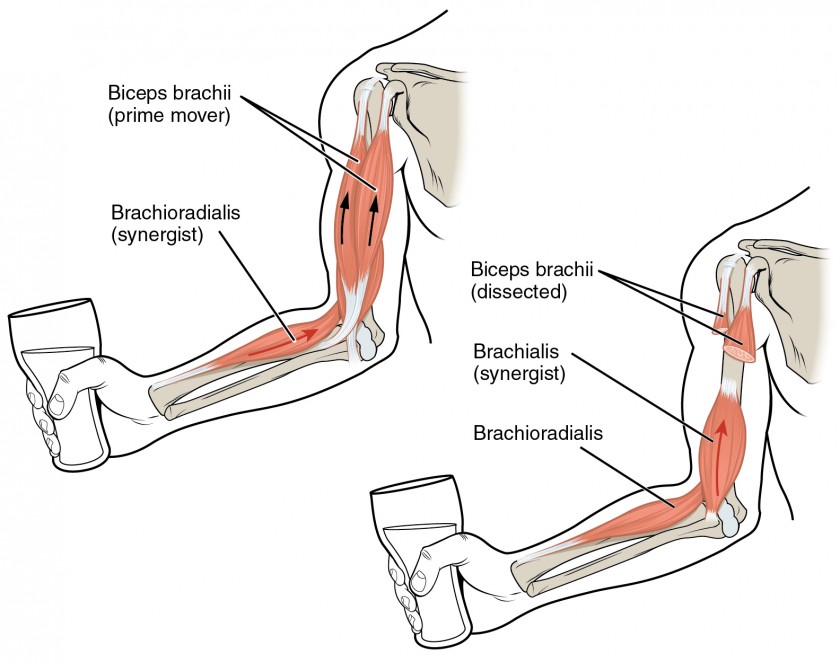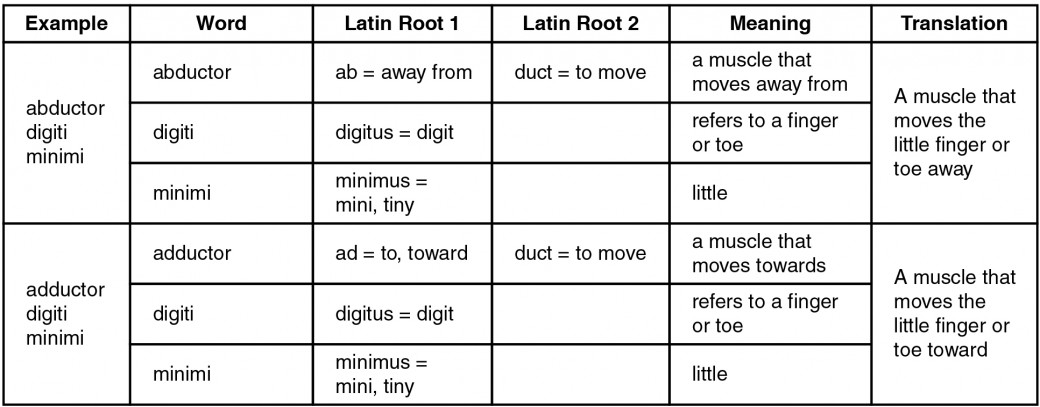How Are Skeletal Muscles Named
Figure seven.15. A Torso in Movement The muscular system allows us to movement, flex and contort our bodies. Practicing yoga, as pictured hither, is a practiced example of the voluntary use of the muscular arrangement. (credit: Dmitry Yanchylenko)
Learning Objectives
- Describe the deportment and roles of agonists and antagonists
- Explain the criteria used to name skeletal muscles
Call up about the things that you lot do each mean solar day—talking, walking, sitting, continuing, and running—all of these activities require movement of particular skeletal muscles. Skeletal muscles are even used during sleep. The diaphragm is a canvas of skeletal muscle that has to contract and relax for you to exhale day and night. If you lot think from your written report of the skeletal arrangement and joints, trunk movement occurs around the joints in the body. The focus of this chapter is on skeletal musculus organization. The organization to name skeletal muscles will exist explained; in some cases, the muscle is named by its shape, and in other cases it is named by its location or attachments to the skeleton. If y'all understand the meaning of the name of the musculus, ofttimes it will assist you retrieve its location and/or what information technology does. This affiliate also will describe how skeletal muscles are arranged to accomplish movement, and how other muscles may assist, or exist arranged on the skeleton to resist or acquit out the opposite movement. The actions of the skeletal muscles will be covered in a regional manner, working from the head down to the toes.
Interactions of Skeletal Muscles and Their Lever Systems
To motion the skeleton, the tension created by the contraction of the fibers in most skeletal muscles is transferred to the tendons. The tendons are strong bands of dense, regular connective tissue that connect muscles to bones. The bone connection is why this muscle tissue is called skeletal muscle.
Interactions of Skeletal Muscles in the Torso
To pull on a bone, that is, to change the bending at its synovial articulation, which essentially moves the skeleton, a skeletal muscle must besides be attached to a fixed part of the skeleton. The moveable terminate of the muscle that attaches to the os being pulled is called the muscle's insertion , and the end of the muscle attached to a stock-still (stabilized) os is chosen the origin . During forearm flexion —angle the elbow—the brachioradialis assists the brachialis.
Although a number of muscles may be involved in an action, the master muscle involved is called the prime mover , or agonist . To elevator a cup, a musculus called the biceps brachii is actually the prime number mover; however, because information technology can exist assisted by the brachialis, the brachialis is called a synergist in this action (Figure 7.16). A synergist can likewise be a fixator that stabilizes the bone that is the attachment for the prime mover's origin.

A muscle with the opposite action of the prime mover is called an antagonist . Antagonists play ii important roles in muscle function: (1) they maintain body or limb position, such equally property the arm out or standing erect; and (2) they control rapid motion, as in shadow battle without landing a punch or the power to bank check the motility of a limb.
For example, to extend the knee, a grouping of 4 muscles called the quadriceps femoris in the inductive compartment of the thigh are activated (and would be called the agonists of knee extension). However, to flex the knee articulation, an opposite or antagonistic set up of muscles chosen the hamstrings is activated.
Every bit you tin see, these terms would also be reversed for the opposing activeness. If you lot consider the outset action equally the articulatio genus bending, the hamstrings would be called the agonists and the quadriceps femoris would and so be called the antagonists. See Table 7.1 for a listing of some agonists and antagonists.
| Agonist and Antagonist Skeletal Musculus Pairs | ||
|---|---|---|
| Agonist | Antagonist | Movement |
| Biceps brachii: in the anterior compartment of the arm | Triceps brachii: in the posterior compartment of the arm | The biceps brachii flexes the forearm, whereas the triceps brachii extends it. |
| Hamstrings: group of 3 muscles in the posterior compartment of the thigh | Quadriceps femoris: group of four muscles in the anterior compartment of the thigh | The hamstrings flex the leg, whereas the quadriceps femoris extend it. |
| Flexor digitorum superficialis and flexor digitorum profundus: in the anterior compartment of the forearm | Extensor digitorum: in the posterior compartment of the forearm | The flexor digitorum superficialis and flexor digitorum profundus flex the fingers and the hand at the wrist, whereas the extensor digitorum extends the fingers and the hand at the wrist. |
There are likewise skeletal muscles that practice not pull against the skeleton for movements. For example, in that location are the muscles that produce facial expressions. The insertions and origins of facial muscles are in the pare, so that certain individual muscles contract to form a smile or frown, form sounds or words, and raise the eyebrows. There also are skeletal muscles in the tongue, and the external urinary and anal sphincters that allow for voluntary regulation of urination and defecation, respectively. In addition, the diaphragm contracts and relaxes to change the book of the pleural cavities but it does non move the skeleton to practise this.
Everyday Connections: Practise and Stretching
When exercising, it is important to first warm up the muscles. Stretching pulls on the musculus fibers and it likewise results in an increased blood menstruation to the muscles being worked. Without a proper warm-upwards, information technology is possible that you lot may either damage some of the muscle fibers or pull a tendon. A pulled tendon, regardless of location, results in pain, swelling, and macerated role; if it is moderate to severe, the injury could immobilize you lot for an extended period.
Call up the discussion about muscles crossing joints to create movement. Most of the joints yous utilize during exercise are synovial joints, which have synovial fluid in the joint space between two basic. Practise and stretching may besides have a beneficial effect on synovial joints. Synovial fluid is a thin, just viscous film with the consistency of egg whites. When y'all get-go get up and first moving, your joints experience stiff for a number of reasons. After proper stretching and warm-up, the synovial fluid may become less viscous, allowing for better joint function.
Criteria in Naming Skeletal Muscles
The Greeks and Romans conducted the offset studies done on the human being body in Western culture. The educated grade of subsequent societies studied Latin and Greek, and therefore the early pioneers of anatomy continued to apply Latin and Greek terminology or roots when they named the skeletal muscles. The big number of muscles in the body and unfamiliar words can make learning the names of the muscles in the torso seem daunting, just understanding the etymology can help. Etymology is the written report of how the root of a particular word entered a language and how the employ of the word evolved over fourth dimension. Taking the time to acquire the root of the words is crucial to agreement the vocabulary of anatomy and physiology. When you sympathize the names of muscles information technology will aid y'all retrieve where the muscles are located and what they do (Figure 7.17, Effigy 7.eighteen, and Table 7.two). Pronunciation of words and terms will accept a flake of time to chief, but after you take some basic information; the correct names and pronunciations will become easier.


| Mnemonic Device for Latin Roots | ||
|---|---|---|
| Example | Latin or Greek Translation | Mnemonic Device |
| advertizing | to; toward | ADvance toward your goal |
| ab | away from | north/a |
| sub | under | SUBmarines move under water. |
| ductor | something that moves | A conductor makes a train motion. |
| anti | against | If y'all are hating, you are against engaging in social activities. |
| epi | on top of | n/a |
| apo | to the side of | n/a |
| longissimus | longest | "Longissimus" is longer than the discussion "long." |
| longus | long | long |
| brevis | short | cursory |
| maximus | large | max |
| medius | medium | "Medius" and "medium" both begin with "med." |
| minimus | tiny; little | mini |
| rectus | straight | To RECTify a situation is to straighten it out. |
| multi | many | If something is MULTIcolored, it has many colors. |
| uni | 1 | A UNIcorn has one horn. |
| bi/di | ii | If a band is DIcast, it is made of two metals. |
| tri | three | TRIple the corporeality of money is three times as much. |
| quad | four | QUADruplets are four children born at one birth. |
| externus | outside | EXternal |
| internus | inside | INternal |
Anatomists name the skeletal muscles according to a number of criteria, each of which describes the muscle in some way. These include naming the muscle after its shape, its size compared to other muscles in the expanse, its location in the body or the location of its attachments to the skeleton, how many origins it has, or its action.
The skeletal muscle'due south anatomical location or its human relationship to a particular bone often determines its name. For example, the frontalis muscle is located on top of the frontal bone of the skull. Similarly, the shapes of some muscles are very distinctive and the names, such as orbicularis, reflect the shape. For the buttocks, the size of the muscles influences the names: gluteus maximus (largest), gluteus medius (medium), and the gluteus minimus (smallest). Names were given to signal length—brevis (short), longus (long)—and to identify position relative to the midline: lateralis (to the outside away from the midline), and medialis (toward the midline). The direction of the muscle fibers and fascicles are used to draw muscles relative to the midline, such as the rectus (direct) abdominis, or the oblique (at an angle) muscles of the belly.
Some muscle names point the number of muscles in a group. One example of this is the quadriceps, a group of iv muscles located on the anterior (front) thigh. Other musculus names can provide information as to how many origins a particular muscle has, such as the biceps brachii. The prefix bi indicates that the muscle has two origins and tri indicates three origins.
The location of a musculus'south attachment can also appear in its name. When the name of a muscle is based on the attachments, the origin is e'er named first. For instance, the sternocleidomastoid musculus of the neck has a dual origin on the sternum (sterno) and clavicle (cleido), and it inserts on the mastoid process of the temporal bone. The last feature by which to proper noun a musculus is its action. When muscles are named for the movement they produce, ane tin find action words in their proper noun. Some examples are flexor (decreases the angle at the joint), extensor (increases the angle at the joint), abductor (moves the bone away from the midline), or adductor (moves the bone toward the midline).
How Are Skeletal Muscles Named,
Source: https://www.coursehero.com/study-guides/nemcc-ap/the-muscular-system/
Posted by: singerdard1949.blogspot.com


0 Response to "How Are Skeletal Muscles Named"
Post a Comment